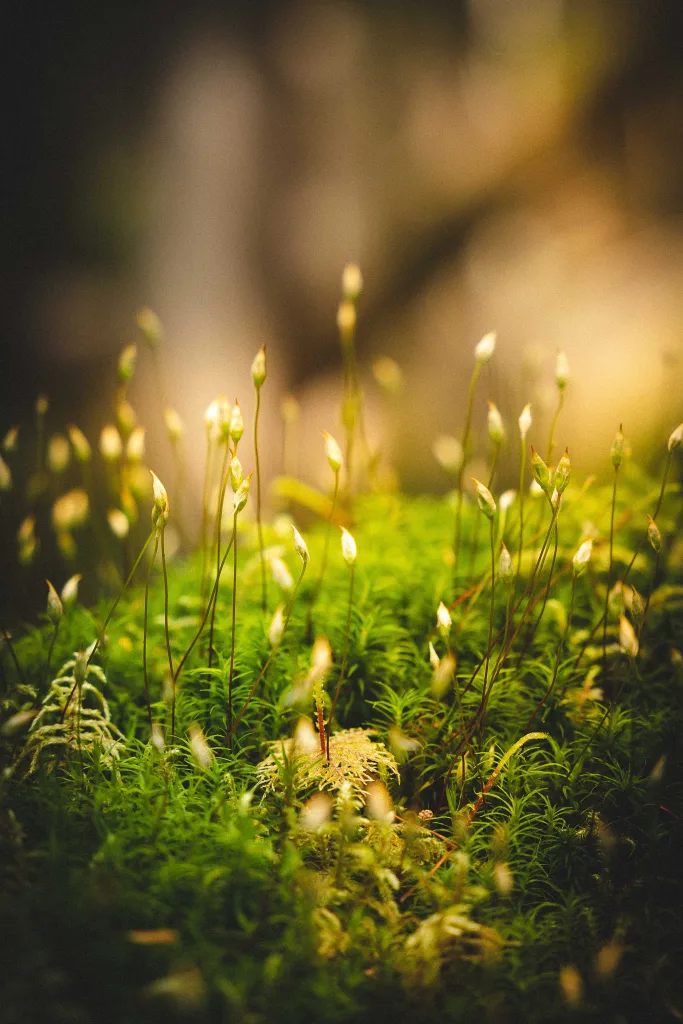Imagine stepping into a tranquil oasis, a serene space where time seems to slow down and worries melt away. In the world of Zen gardens, there is one element that often takes center stage: moss. Delicate and velvety, moss holds a special significance within these meticulously crafted spaces. Moss represents a connection to nature, a harmonious balance, and a sense of age and wisdom. It invites us to pause, to reflect, and to find beauty in simplicity. As we delve into the enchanting world of Zen gardens, let us explore the profound symbolism that moss brings to these serene landscapes.

Understanding Zen Gardens
Zen gardens, also known as Japanese rock gardens or dry landscapes, have a rich history and are deeply rooted in Zen Buddhism. These gardens are carefully designed to create a sense of peace, tranquility, and contemplation. Understanding the history of Zen gardens, their key elements, and their purpose will provide valuable insights into the role of moss in these serene and mystical spaces.
The history of Zen gardens
The history of Zen gardens can be traced back to the 7th century in Japan. Influenced by Chinese landscape paintings and Taoist philosophy, Zen monks created these gardens as a way to connect with nature and cultivate a sense of harmony. The first Zen gardens were larger in scale, replicating natural landscapes with rocks, sand, and minimal vegetation. Over time, they evolved into smaller, more intimate spaces designed for meditation and reflection.
Key elements of a Zen garden
Zen gardens are characterized by their minimalistic and abstract design, featuring carefully arranged elements that evoke a sense of simplicity and tranquility. The key elements typically found in a Zen garden include rocks, sand or gravel, water features, and moss. These elements work together to create a microcosm of the natural world, inviting contemplation and reflection.
The purpose of Zen gardens
The primary purpose of Zen gardens is to facilitate meditation and cultivate a sense of inner peace and harmony. These gardens are designed to elicit a feeling of serenity and detachment from the outside world, serving as a refuge for quiet contemplation and self-reflection. Zen gardens offer a space for individuals to experience a profound connection with nature and a sense of oneness with the universe.
Essence of Moss in a Zen Garden
Amidst the rocks, sand, and water, moss plays a significant role in creating the serene atmosphere of a Zen garden. Its presence is not just a result of natural growth; rather, it is deliberate and purposeful. Understanding the specific role of moss in Zen gardens, its symbolic meaning, and the types of moss used can shed light on its essence within these sacred spaces.
Specific role of moss in such gardens
Moss serves multiple purposes in Zen gardens. Firstly, it adds a lush green carpet-like texture to the otherwise rocky and sandy landscape, softening the overall appearance and creating a contrast. Secondly, moss hinders the growth of unwanted plants, making it easier to maintain the garden’s desired aesthetic. Lastly, it helps retain moisture, ensuring the longevity of the moss itself and contributing to the overall ecosystem of the garden.
Symbolic meaning behind the presence of moss
In Zen philosophy, moss carries symbolic significance. Its ability to thrive in delicate and adverse conditions represents resilience and endurance. Furthermore, the slow-paced growth of moss teaches us the value of patience and the beauty found in the imperfections of nature. The presence of moss in Zen gardens serves as a reminder of the harmony and humility that can be found in embracing imperfection.
Types of moss used in a Zen garden
Different varieties of moss are carefully selected and utilized in Zen gardens, each with its unique characteristics and visual appeal. Some commonly used mosses include cushion moss (Leucobryum glaucum), haircap moss (Polytrichum commune), and fern moss (Thuidium delicatulum). The choice of moss depends on factors such as texture, color, and the desired visual effect in a particular area of the garden.
Spiritual Significance of Moss in Zen Gardens
Moss holds profound spiritual significance in the context of Zen gardens. Its presence goes beyond its visual appeal; it represents deeper aspects of Zen philosophy and serves as a catalyst for spiritual growth and contemplation.
Moss as a symbol of harmony and tranquility
In Zen philosophy, harmony and tranquility are essential aspects of the spiritual journey. Moss, with its gentle and serene presence, embodies these qualities. Its ability to thrive in seemingly inhospitable conditions reminds us to find peace and contentment even in the midst of chaos and adversity. When surrounded by moss, one can experience a sense of calmness and find solace in the present moment.
Moss as a representation of endurance
The slow growth of moss represents endurance and resilience, qualities that are highly valued in Zen teachings. Moss is often found clinging to rocks and other hard surfaces, effortlessly adapting to challenging environments. This resilience mirrors the Zen concept of enduring hardships and finding strength within oneself. Moss serves as a reminder that growth and beauty can emerge from the most unlikely circumstances.
Moss as a symbol of imperfection and humility
In Zen philosophy, the pursuit of perfection is discouraged, as it goes against the natural order of things. Moss, with its imperfect growth patterns and variations in color and texture, embodies the acceptance of imperfection. It reminds us of the beauty found in the flawed and humble aspects of life. Moss teaches us the importance of embracing our own imperfections and finding beauty in the simplicity of existence.
Physiological Role of Moss in Zen Gardens
Beyond its symbolic significance, moss also plays a vital physiological role within Zen gardens. Understanding its role in the garden’s ecosystem, as well as its environmental benefits, sheds light on the intricate relationship between moss and the overall balance of the space.
The eco-system of moss in Zen gardens
Moss forms an integral part of the ecosystem within Zen gardens. It creates a microclimate by retaining moisture, providing a habitat for small creatures, and reducing soil erosion. Moss also plays a vital role in the decomposition of organic matter, contributing to nutrient cycling and soil health. Its presence fosters biodiversity and enhances the sustainability of the garden.
Environmental benefits of moss
Moss boasts numerous environmental benefits that contribute to the overall health of Zen gardens. Firstly, it acts as a natural air purifier by filtering pollutants and trapping dust particles. Additionally, moss has the ability to absorb and retain water, minimizing runoff and allowing for better water infiltration. By reducing soil erosion, moss helps maintain the structural integrity of the garden and prevents nutrient loss.
How moss affects the overall balance of a Zen garden
Moss plays a crucial role in maintaining the delicate balance of a Zen garden. Its ability to retain moisture helps maintain the required humidity, creating an environment conducive to the growth of other plants. Moss also prevents the growth of unwanted plants by inhibiting their access to light and nutrients. Its presence adds to the aesthetic appeal of the garden, enhancing the overall visual experience and imparting a sense of harmony and tranquility.

Artistic Aspect of Moss in Zen Gardens
Moss not only contributes to the ecological and spiritual aspects of Zen gardens but also holds significant artistic value. Its usage in creating visual contrast, patterns, and textures adds depth and dimension to the garden’s design, elevating its aesthetic appeal.
Use of moss in creating visual contrast in Zen gardens
In Zen gardens, moss is strategically placed to create visual contrast against the backdrop of rocks, sand, and other elements. The vibrant green of the moss stands out against the neutral tones, adding a burst of color to the garden. This contrast draws the viewer’s attention, allowing them to appreciate the intricate details and harmonious composition of the garden.
Role of moss in creating different patterns and textures
Moss is a versatile element of design, offering various possibilities in terms of patterns and textures. Its unique growth patterns provide an organic and naturalistic feel to the garden, adding visual interest and depth. The velvety texture of moss invites tactile engagement and further enhances the sensory experience within the garden. Whether it cascades over rocks or forms a delicate carpet, moss creates visual intricacy and nuance.
How the presence of moss enhances the overall aesthetic appeal
Moss, with its lush green color and soft texture, enhances the overall aesthetic appeal of Zen gardens. Its presence creates a sense of abundance and vitality within the otherwise minimalistic and austere landscape. The juxtaposition of the moss’s tranquility with the ruggedness of other elements evokes a sense of harmony, inviting the viewer to contemplate the beauty of simplicity. Moss adds a touch of natural beauty and visual allure, enriching the garden’s artistic expression.
Moss Maintenance in Zen Gardens
While moss brings numerous benefits to Zen gardens, its maintenance poses unique challenges. Understanding the challenges, along with essential tips for moss care and maintenance, ensures the longevity and vibrancy of this integral element.
Challenges in maintaining moss in Zen gardens
Maintaining moss in Zen gardens requires careful attention, as it is sensitive to changes in environmental conditions. One of the challenges is maintaining the ideal moisture level, as too much water can cause the moss to rot, while insufficient moisture can lead to its death. Another challenge is the prevention of weed encroachment, as moss is easily outnumbered by faster-growing plants. Additionally, ensuring proper sunlight exposure and controlling excessive shade are essential to preserving the health of moss.
Tips for moss care and maintenance
Proper care and maintenance of moss can help overcome the challenges and ensure its longevity. Regular watering is crucial, but it should be done in moderation to prevent waterlogging. Direct sunlight should be limited to avoid damaging the delicate cells of the moss. Weeding, conducted by hand, is essential to prevent unwanted plants from encroaching upon the moss. In areas with excessive shade, careful trimming of overhanging branches can help maintain the ideal light conditions.
Seasonal impacts on moss growth
The growth and vitality of moss in Zen gardens are influenced by seasonal changes. Moss tends to grow more actively during the cool and humid seasons of spring and autumn. In summer, when temperatures rise, moss growth slows down, requiring extra care and attention to ensure its survival. Conversely, during winter, moss enters a dormant phase, while still requiring proper moisture levels to maintain its health. Understanding these seasonal impacts allows gardeners to adapt their maintenance practices accordingly.

Relevance of Moss in Zen Philosophy
Moss holds deep significance in Zen philosophy, reflecting the fundamental ideals of simplicity, naturalness, and mindfulness. Understanding the connection between Zen philosophy and the use of moss in Zen gardens provides valuable insights into the spiritual essence of these sacred spaces.
Connection between Zen philosophy and the use of moss
Zen philosophy places great emphasis on the realization of one’s true nature and the interconnectedness of all beings. Moss, with its humble existence and unassuming presence, embodies these philosophical principles. Its simplicity and unadorned beauty resonate with the idea of finding wisdom in ordinary simplicity and living authentically in harmony with oneself and the natural world.
What moss teaches about Zen ideals like simplicity and naturalness
Moss teaches us important Zen ideals, such as simplicity and naturalness. Its unpretentious growth patterns and minimalistic beauty remind us to embrace the essence of simplicity in our lives. Moss invites us to appreciate the beauty found in the natural world, untouched by human intervention. It encourages us to live mindfully, recognizing the interconnectedness of all things and cultivating a sense of contentment in the present moment.
Moss as a meditation aid in Zen practice
Moss, with its tranquil and serene presence, serves as a powerful aid in Zen meditation practice. Its soft texture and vibrant green color create a soothing visual and tactile experience, assisting practitioners in entering a deep state of meditation. Moss absorbs and retains ambient sounds, helping to create a serene environment conducive to focused awareness and inner stillness. As practitioners engage with the moss visually and through touch, they are encouraged to immerse themselves fully in the present moment, leaving behind distractions and attaining a sense of profound tranquility.
Case Studies: Examples of Zen Gardens with Moss
Numerous renowned Zen gardens worldwide exemplify the artistic and spiritual utilization of moss. Various examples demonstrate the diversity of moss applications and its transformative effects on the overall garden experience.
Famous Zen gardens featuring moss
Ryoan-ji in Kyoto, Japan, is one of the most famous Zen gardens, renowned for its distinctive rock and moss composition. Designed in the late 15th century, it features fifteen rocks arranged in precise patterns on a bed of white gravel. The rocks, combined with the lush moss surrounding them, create a visually captivating and spiritually evocative atmosphere. Another notable example is the Saiho-ji Moss Garden, also in Kyoto, known as the “Kokedera” or the Moss Temple. This garden is covered entirely in moss, providing a serene and ethereal setting for meditation and contemplation.
Different ways moss is utilized in these gardens
In Ryoan-ji, moss is strategically placed around the rocks to accentuate their presence and create a sense of harmony and balance. It adds a layer of softness to the otherwise rigid composition, creating a visually appealing contrast. In Saiho-ji, moss takes center stage, covering the entire garden in a vibrant green carpet. This all-encompassing moss creates a tranquil and immersive environment, fostering a deep connection with nature and a heightened spiritual experience.
Impact of this moss presence on the overall garden experience
The presence of moss in these Zen gardens significantly contributes to the overall garden experience. Moss softens the landscape, imbuing it with a sense of serenity and inviting visitors to immerse themselves in the beauty of nature. Its presence encourages contemplation and meditation, providing a space for inner reflection and self-discovery. The combination of rocks and moss creates a harmonious dialogue between the natural and the man-made, inviting visitors to explore the depths of the human spirit and embrace the imperfections of existence.
Understanding the Rituals Associated with Moss in Zen Gardens
Moss is not only a physical element in Zen gardens but a symbol embedded in rituals and ceremonies. These rituals add depth and meaning to the presence of moss, further enriching the Zen practice experienced within these sacred spaces.
Rituals and ceremonies involving moss
In Zen gardens, various rituals and ceremonies are associated with the presence of moss. These can range from simple acts of tending to the moss, such as cleaning and watering, to more elaborate practices such as moss viewing ceremonies or moss appreciation gatherings. These activities often serve as opportunities for communal participation, fostering a sense of connection and shared spiritual experience.
Role of these ceremonies in Zen practice
The rituals and ceremonies involving moss in Zen gardens serve multiple purposes. Firstly, they encourage mindfulness and attentiveness towards the natural world, fostering a sense of gratitude and reverence for all living things. Secondly, these ceremonies provide opportunities for self-reflection and introspection, allowing individuals to deepen their understanding of Zen philosophy. Lastly, these communal activities promote a sense of unity and harmony among practitioners, fostering a shared spiritual journey and emotional connection.
How these rituals add to the symbolism of moss
The rituals and ceremonies associated with moss in Zen gardens enhance the symbolism and significance of moss itself. These practices create a sense of reverence and sacredness, elevating the moss beyond its physical presence. Through these rituals, participants acknowledge the value of imperfection, endurance, and interconnectedness, deepening their understanding of the spiritual teachings embodied by moss. The act of engaging in these rituals adds layers of meaning to the moss and its representation within Zen gardens.
Future of Moss in Zen Gardens
As the world continues to evolve, the role of moss in Zen gardens is subject to shifts and adaptations. Exploring the potential changes, trends, and innovative uses of moss in the context of Zen gardens offers a glimpse into the future of these contemplative spaces.
Changes and trends in the use of moss in Zen gardens
In recent years, there has been a growing interest in sustainable and eco-friendly practices, leading to changes in the use of moss in Zen gardens. Gardeners are increasingly embracing native moss species and prioritizing the preservation of biodiversity. Additionally, there is a trend towards incorporating moss on vertical surfaces, such as walls and fence panels, adding a touch of natural beauty and maximizing limited garden space. These changes reflect a continued emphasis on the ecological and spiritual significance of moss within Zen gardens.
Influence of climate change on moss in Zen gardens
Climate change poses challenges to the growth and maintenance of moss in Zen gardens. Rising temperatures and altered precipitation patterns may impact the survival and distribution of different moss species. Gardeners and landscape designers may need to adapt their practices by selecting moss varieties that are more resilient to changing climate conditions. Furthermore, innovative irrigation techniques and shade structures could help create microclimates that support the health and growth of moss in the face of climate change.
Potential innovative uses and interpretations of moss in Zen gardens
As the appreciation for moss in Zen gardens continues to grow, there is potential for innovative uses and interpretations to emerge. Moss walls or moss sculptures could become focal points within the garden, offering unique visual and tactile experiences. The integration of technology, such as misting systems for maintaining ideal moisture levels or ambient lighting to enhance the moss’s color, could further enhance the aesthetic and spiritual ambiance of Zen gardens. These innovative uses of moss may expand the possibilities and further deepen the connection between individuals and the natural world within these sacred spaces.
In conclusion, moss holds a multifaceted role in Zen gardens, intertwining its ecological, aesthetic, and spiritual aspects. By understanding the historical, symbolic, and practical significance of moss, we gain a deeper appreciation for its essence within these serene and contemplative spaces. Moss, with its enduring resilience, imperfect beauty, and tranquil presence, serves as a powerful reminder of the harmony and interconnectedness found in nature and within ourselves.




